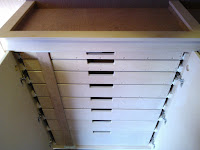 Well thats what i care to call them, damn impressive to look at anyway, seeing as the work contract i was supposed to start last Monday has been put back two weeks, i thought i'd push on finishing the van conversion.
Well thats what i care to call them, damn impressive to look at anyway, seeing as the work contract i was supposed to start last Monday has been put back two weeks, i thought i'd push on finishing the van conversion. 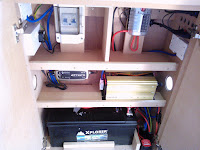 This last week has seen my debit card take a right hiding as i purchased all the necessary components to outfit the van with 240VAC and 12VDC, still after having calmed down from the initial financial hit i soon found myself engulfed in cables and shiny things.......mmm i like shiny things.
This last week has seen my debit card take a right hiding as i purchased all the necessary components to outfit the van with 240VAC and 12VDC, still after having calmed down from the initial financial hit i soon found myself engulfed in cables and shiny things.......mmm i like shiny things.Have to admit this was one job on the Centaur i wasn't looking forward to not least of all because of the costs but also my complete lack of knowledge, and made all the more worse as i possess almost every book available on the subject of boat electrics and imho they all assume a level of knowledge.
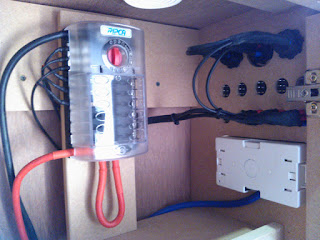 The one that didn't was Don Casey' Sailboat Electrics Simplified, this book has such a great easy-to-read style that even a fool such as myself couldn't mess it up. What i like most is the illustrations and the way the information is broken down into simple concepts. So armed with my multimeter and a heap of parts i set about electrifying the van (and not myself).
The one that didn't was Don Casey' Sailboat Electrics Simplified, this book has such a great easy-to-read style that even a fool such as myself couldn't mess it up. What i like most is the illustrations and the way the information is broken down into simple concepts. So armed with my multimeter and a heap of parts i set about electrifying the van (and not myself).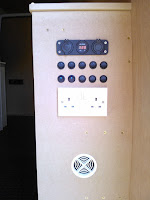 In the end i went with a 190AH battery connected to a voltage sensitive relay with a Ctek MXS 10 charger permanently attached via the AC side, on the DC side i have scope for 10 loads via a Ripca fuse box switched through 10 corresponding 12VDC rocker switches.
In the end i went with a 190AH battery connected to a voltage sensitive relay with a Ctek MXS 10 charger permanently attached via the AC side, on the DC side i have scope for 10 loads via a Ripca fuse box switched through 10 corresponding 12VDC rocker switches. I looked at purchasing a ready-made panel, something i will do with the Centaur but looking at the costs for some of these aftermarket van panels.......well, i thought the marine world was steep but it would appear the campervan world isn't much different as to have the components i actually purchased but all fitted into a piece of brushed allie / stainless doubled the cost - no thanks - i'll do this myself, and so i did with no help from anyone.
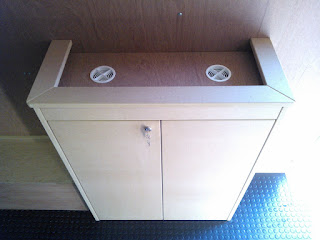 Decided to - and it was frustrating to start with - sit in the shop and play around with the battery and wiring making basic circuits just to understand how it all works and now have quite a good basic grasp of electricity.
Decided to - and it was frustrating to start with - sit in the shop and play around with the battery and wiring making basic circuits just to understand how it all works and now have quite a good basic grasp of electricity.The cabinets meanwhile were all made from mdf, not the most durable but for this application fine, realised i needed a heap more drawers as i always seem to add a couple of plastic tubs on certain jobs full of fasteners and fittings so i decided to build the ultimate drawer unit and nextdoor to this somewhere to keep and heat food.
I'm glad i did this and yes i know the van has sod all to do with the boat but everything i've bought and installed is directly applicable to the Centaurs systems only now i have the confidence to do it all myself.
Cheers

Looks good as usual Roger.lectrikery isn't difficultvonce you get started. 230v is a bit different though, it does bite if you aren't careful though.
ReplyDeleteI lost you at "connected to a voltage sensitive ....." :)
ReplyDeleteGreat idea to put unfamiliar skills into practice in what is a much more accessible installation before you tackle the more challenging confines of the boat. Good stuff.
ReplyDeleteCheers Derek, nothing to it Anon, not as difficult a job as i first thought.
ReplyDeleteThat was definately the plan Norman as seeing where the installation will be in the Centaur i'm going to make hinged panels for all the electrical panels and switches so access is good.
cheers